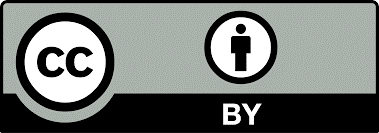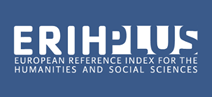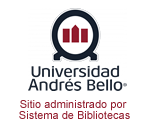El nuevo público cultural crítico. Diseños participativos en los espacios creativos de la web 2.0: el caso de Youtube Play Biennial
Palabras clave:
Museos, Web 2.0, interacción, público crítico, diseños socialesResumen
Ante la actual necesidad de los museos por aumentar y consolidar su audiencia, este artículo relaciona actitudes participativas presentes en los colectivos hacker, fandom y open, con las responsabilidades del nuevo y ansiado público cultural crítico. Como complemento a las actividades culturales desarrolladas en espacios físicos, defendemos la introducción de diseños participativos 2.0. Con el fin de ejemplificar algunos de los beneficios del desarrollo de proyectos museísticos colaborativos online, hemos analizado la iniciativa YouTube Play Biennial (2010), desarrollada por la Fundación Guggenheim junto con YouTube.
Descargas
Referencias
Ariño, Antonio. El movimiento Open. La creación de un dominio público en la era digital Valencia: Universitat de València, 2009.
Deltell, Luis. “Viral art: frontera y crisis del arte audiovisual”. Congreso Europeo de Estética. Madrid: 11 y 12 de Noviembre de 2010. 12/12/2013.
<http://www.uam.es/otros/estetica/DOCUMENTOS%20EN%20PDF/QUINTA%20TANDA/LUIS%20DELTELL.pdf>. Web.
Duchamp, Marcel. “The creative Act”. Artnews. Vol. 56, 4 (1957): 28-29.
Duncan, Carol. Rituales de civilización. Murcia: Nausícaä, 2007.
Eco, Umberto. Lector in fábula. La cooperación interpretativa en el texto narrativo. Barcelona: Lumen, 1981.
Himanen, Pekka. La ética del hacker y el espíritu de la era de la información. Barcelona: Ed. Destino, 2002.
Jenkins, Henry. Convergence Culture. Where old and new media collide. New York: NYU Press, 2006.
Keen, Andrew. “Web 2.0: The second generation of the Internet has arrived. It’s worse than you think”. The weekly Standard. Noviembre 2006. 25/11/2013 <http://www.weeklystandard.com/Content/Public/Articles/000/000/006/714fjczq.asp>. Web.
Lepik, Krista y Pille Pruulmann-Vengerfeldt. “Handicraft Hobbyists in an Ethnographic Museum – Negotiating Expertise and Participation”. Past, future and change: Contemporary analysis of evolving media scapes. Ljubljana: Faculty of Social Sciences, University of Ljubljana Press: Založba FDV(2013): 267-280.
Lévy, Pierre. L’intelligence collective : pour une anthropologie du cyberspace. Paris: Ed. La Découverte, 1997.
Lindauer, Margaret. “The Critical Museum Visitor”. New Museum Theory and Practice: An Introduction. N.p: Blackwell Publishing (2006): 203-225.
Marshall, Bethan. “That’s edutainment!”. 1996. The Independent. 20/09/2013<http://www.independent.co.uk/news/education/educationnews/thatsedutainment-1363993.html>. Web.
Martín Prada, Juan. Prácticas artísticas e Internet en la época de las redes sociales. Madrid: Akal, 2012.
Mieke, Bal. Double Exposure: The Subject of Cultural Analysis. London and New York: Routledge, 1996.
Moglen, Eben. “Freeing the Mind: Free Software and the Death of Proprietary Culture.” 2003. Columbia.edu Publications. 20/10/2013. <http://moglen.law.columbia.edu/publications/maine-speech.html>. Web.
Müller, Christopher. “Networks of ‘personal communities’ and ‘group communities’ in different online communication services. First results of an empirical study in Switzerland.” Exploring Cyber Society Conference, Newcastle: 5-7 Julio de 1999. 22/10/2013. <http://www.socio5.ch/pub/newcastle.html>. Web.
Proctor, Nancy. “From headphones to microphones: Mobile social media in the museum as distributed network”. Museums, social media & 2.0 technology. País Vasco: Euskal Herriko Unibertsitateko Argitalpen Zerbitzua (2011): 27-58.
Reuters. 2010. « Les vidéos artistiques de YouTube entrent au musée Guggenheim» 29 de Septiembre de 2010. Lemonde.fr. 17/10/2013.<http://www.lemonde.fr/culture/article/2010/09/20/les-videos-artistiques-de-youtube-entrent-aumusee-guggenheim_1413785_3246.html>.Web.
Romero, Yolanda. “El Museo Transductor”. Transducers. Collective Pedagogies and Spatial Politics. Granada: Centro de Arte José Guerrero, 2009. 11-13.
Simon, Nina. The participatory museum. California: Museum 2.0. 2010. 26/10/2013. <http://www.participatorymuseum.org/read/>. Web.
Stebbins, Robert. A. “Serious Leisure: A Conceptual Statement”. The Pacific Sociological Review 25-2 (1982): 251-272.
Tejeda, Isabel. El montaje expositivo como traducción. Fidelidades, traiciones y hallazgos en el arte contemporáneo desde los años 70. Madrid: Trama editorial y Fundación Arte y Derecho, 2006.
Toffler, Alvin. The Third Wave. Toronto: Bantam Books, 1981.
Van Gennep, Arnold. The rites of passage. Chicago: University of Chicago Press, 1908.
Van Zoonen, Liesbet. Entertaining the Citizen: When Politics and Popular Culture Converge. Lanham, MD: Rowman & Littlefield, 2005.
Winter, David. “Atari Pong, The first steps”. Pong-story. (s.f.) 10/12/2013. <http://www.pong-story.com/atpong1.htm>. Web.
Descargas
Publicado
Número
Sección
Licencia
Derechos de autor 2022 Revista de humanidades (Santiago. En línea)

Esta obra está bajo una licencia internacional Creative Commons Atribución-NoComercial-SinDerivadas 4.0.
You are free to:
- Share — copy and redistribute the material in any medium or format for any purpose, even commercially.
- Adapt — remix, transform, and build upon the material for any purpose, even commercially.
- The licensor cannot revoke these freedoms as long as you follow the license terms.
Under the following terms:
- Attribution — You must give appropriate credit , provide a link to the license, and indicate if changes were made . You may do so in any reasonable manner, but not in any way that suggests the licensor endorses you or your use.
- No additional restrictions — You may not apply legal terms or technological measures that legally restrict others from doing anything the license permits.
Notices:
You do not have to comply with the license for elements of the material in the public domain or where your use is permitted by an applicable exception or limitation .
No warranties are given. The license may not give you all of the permissions necessary for your intended use. For example, other rights such as publicity, privacy, or moral rights may limit how you use the material.













